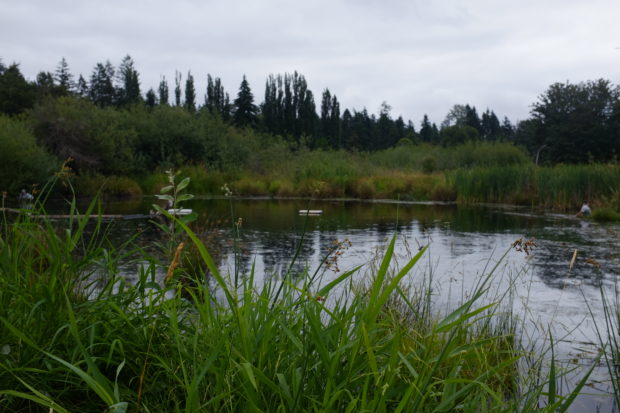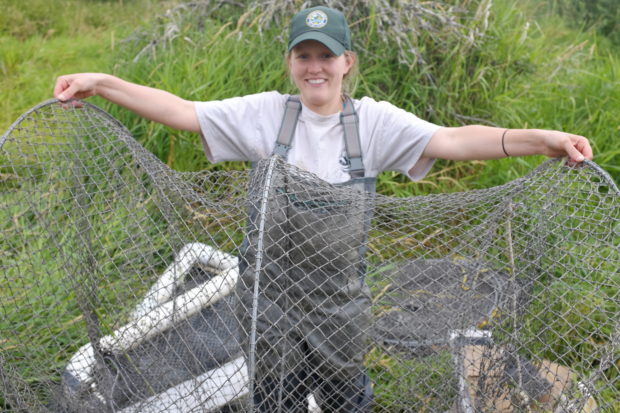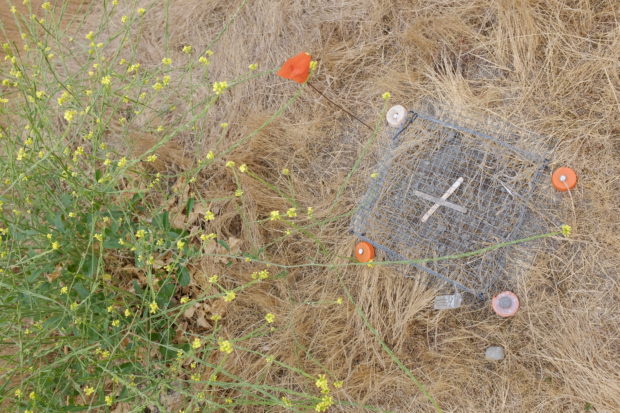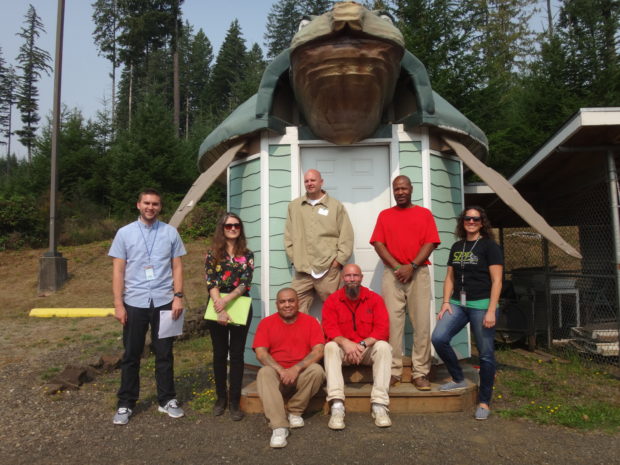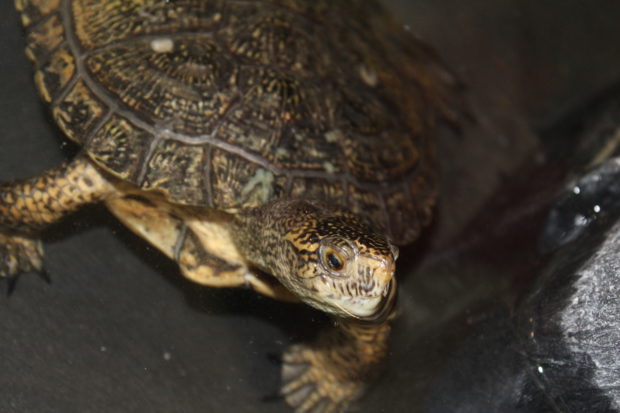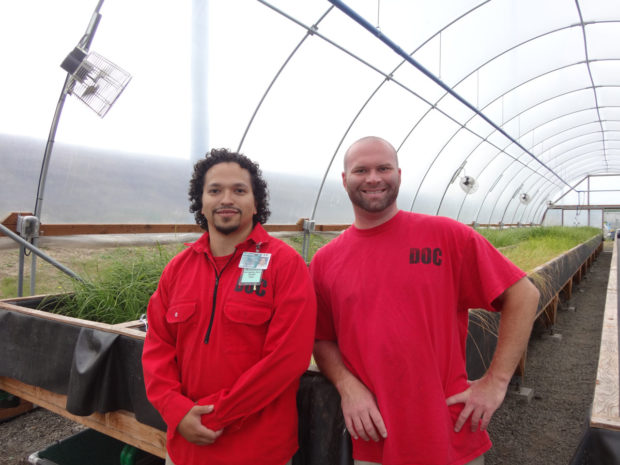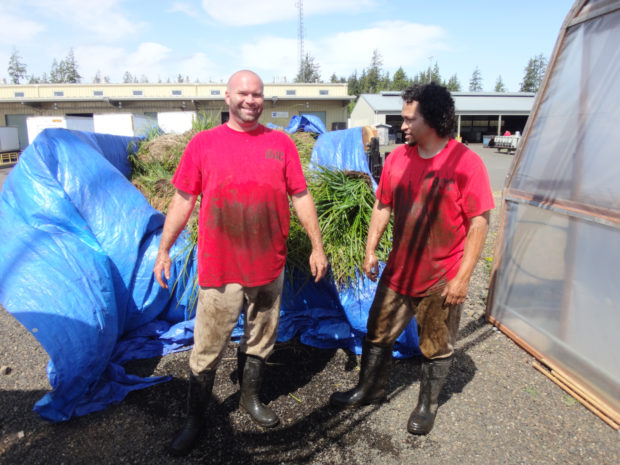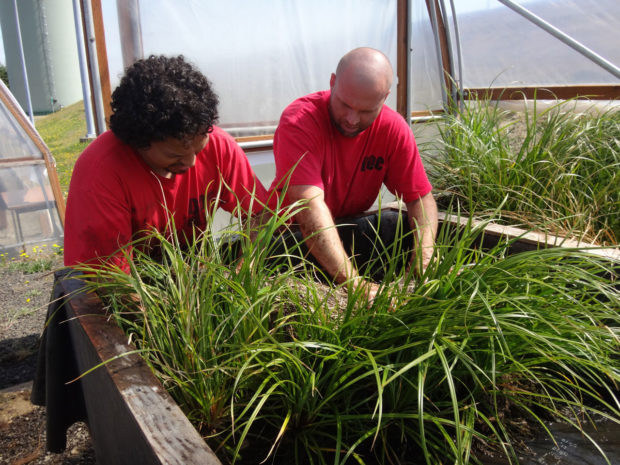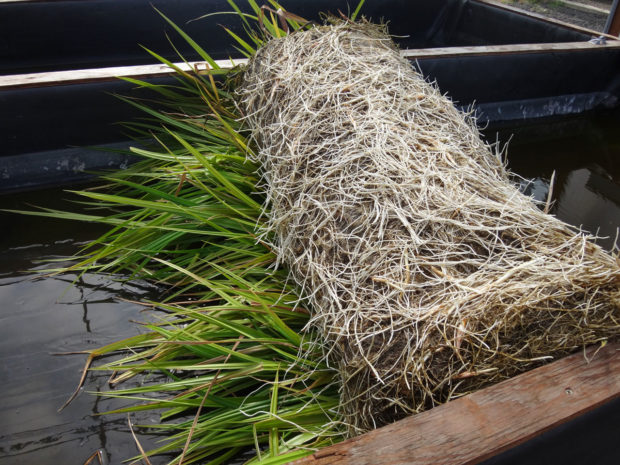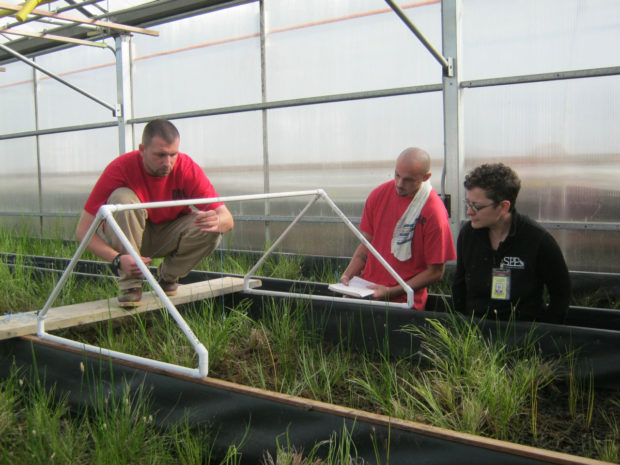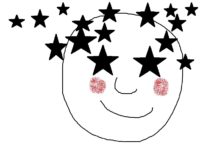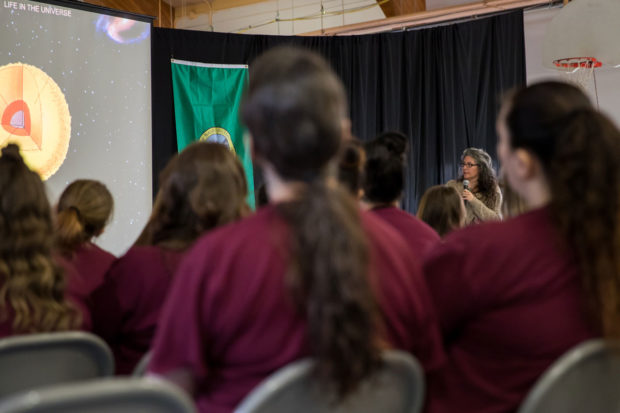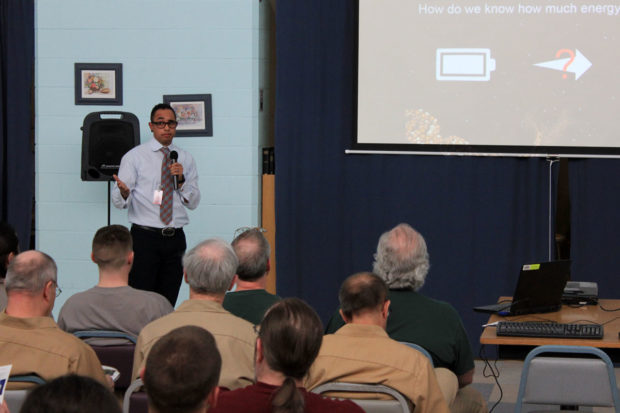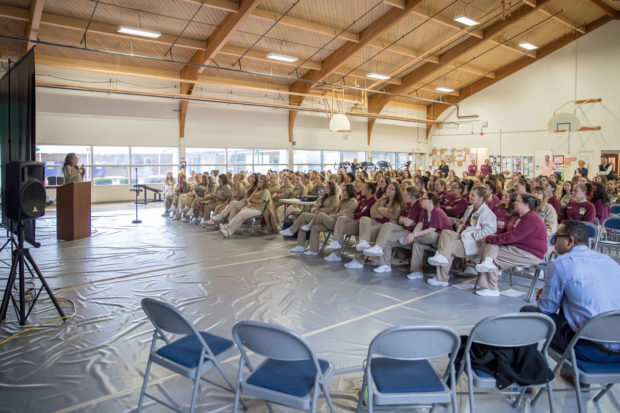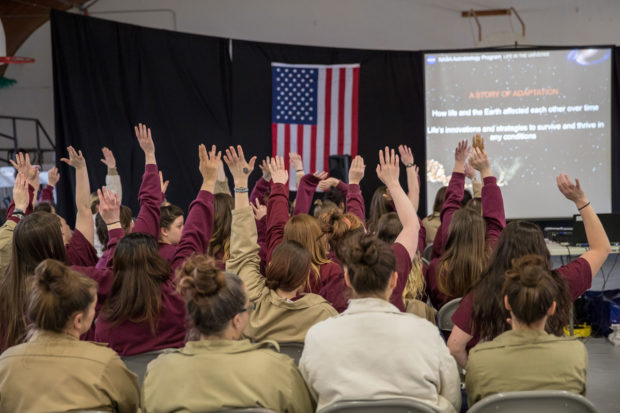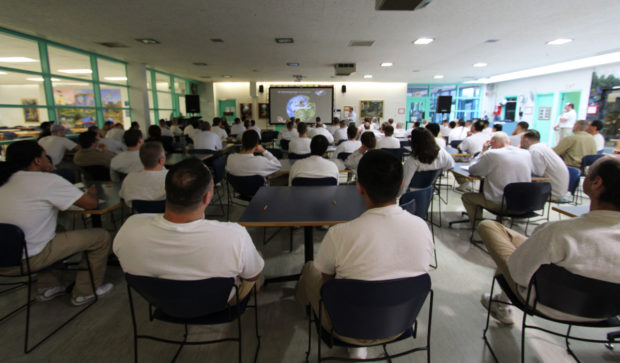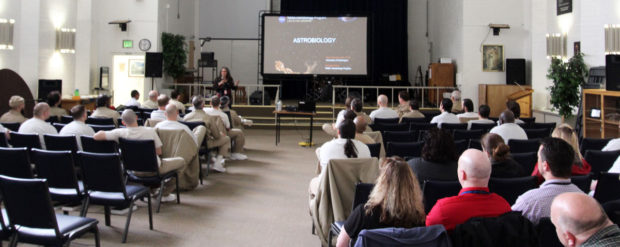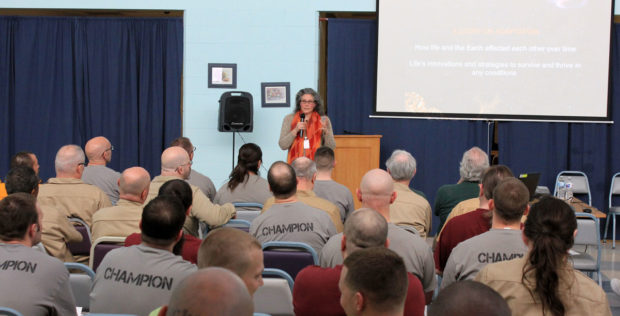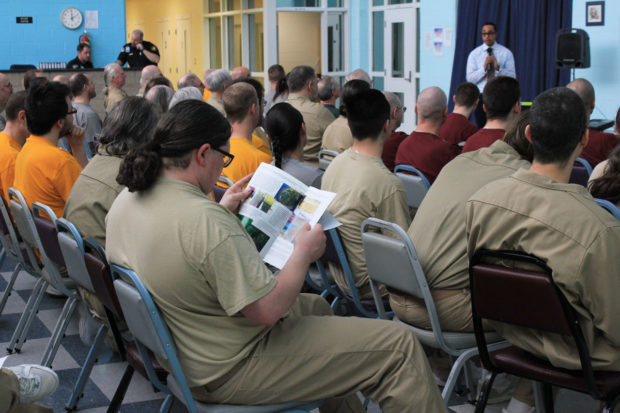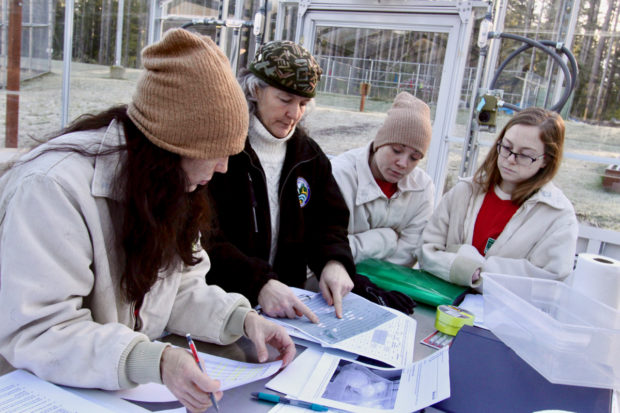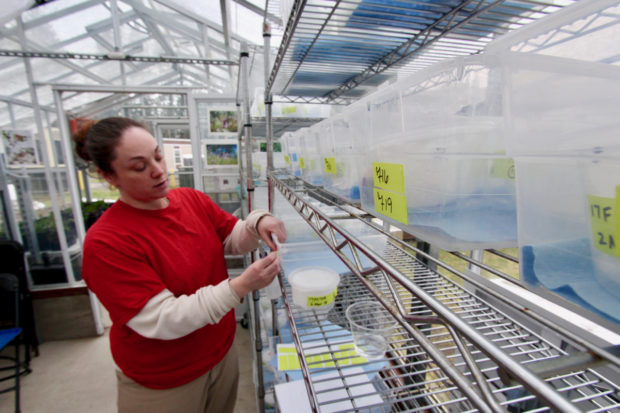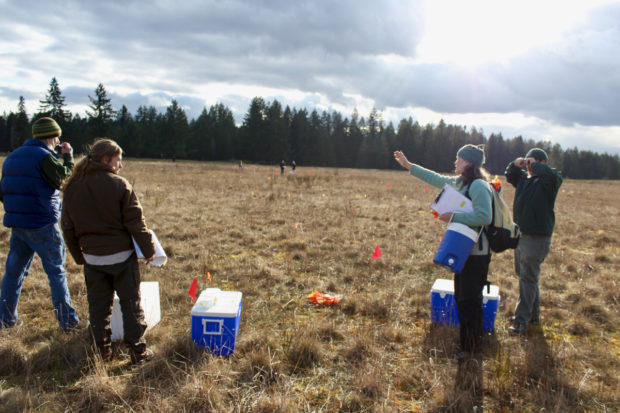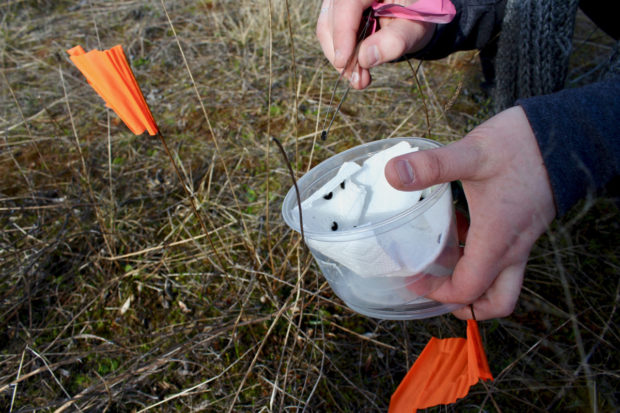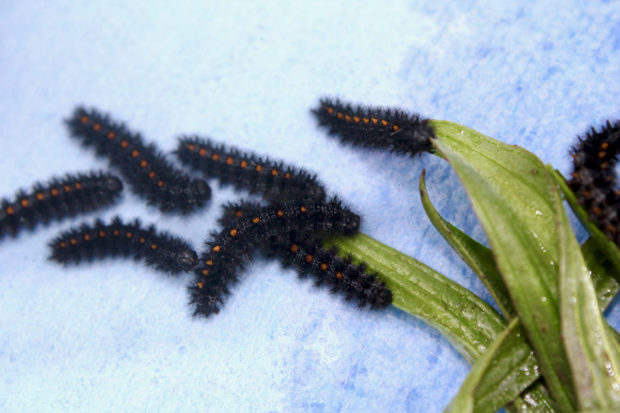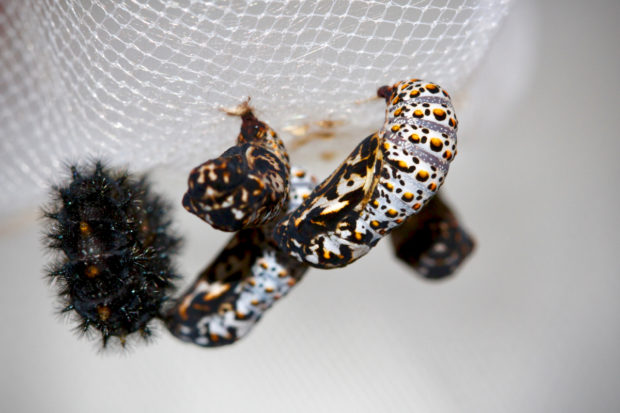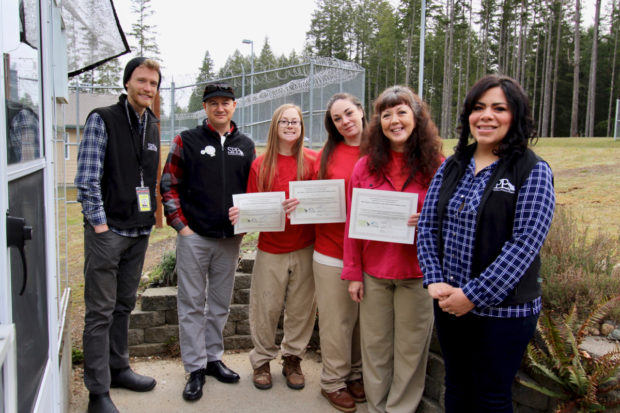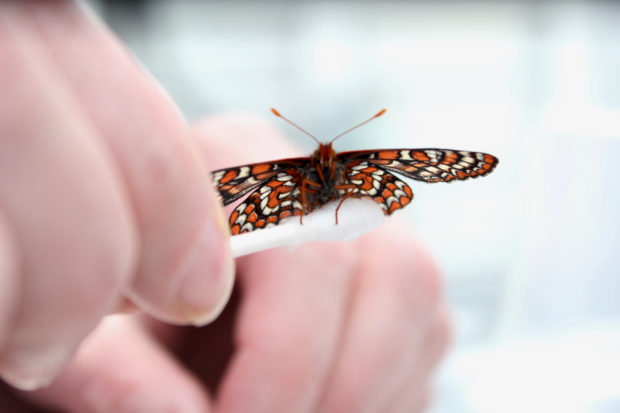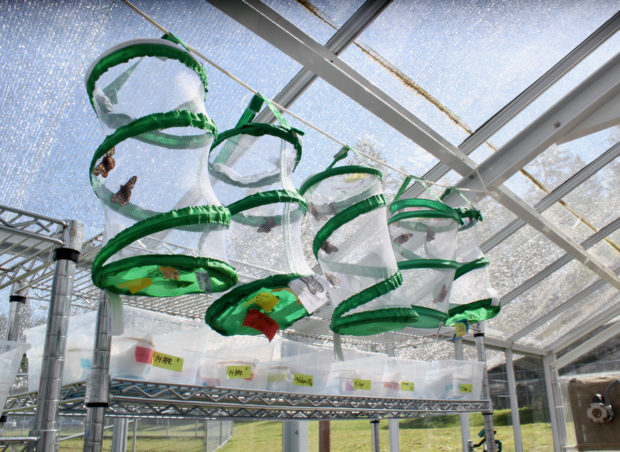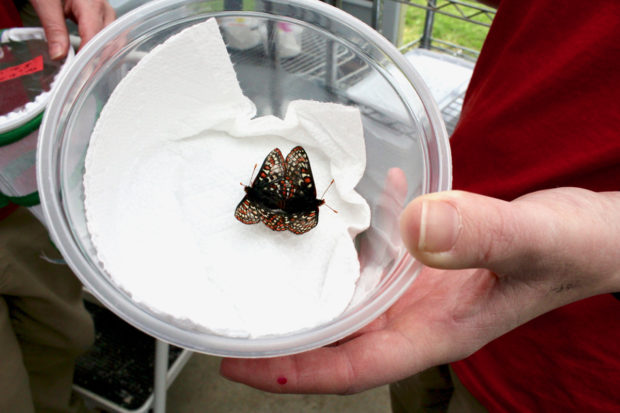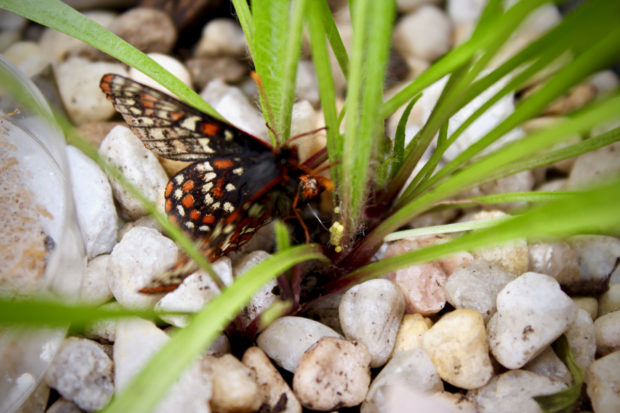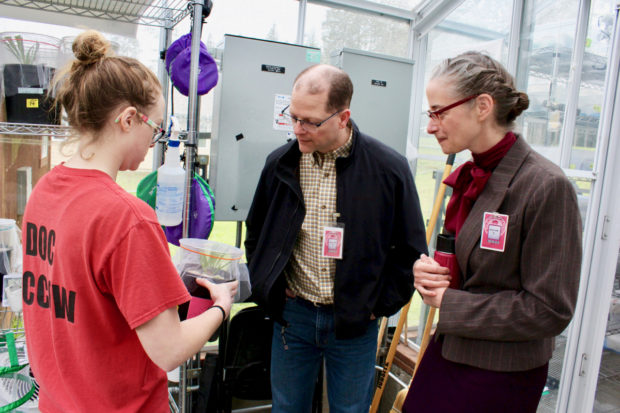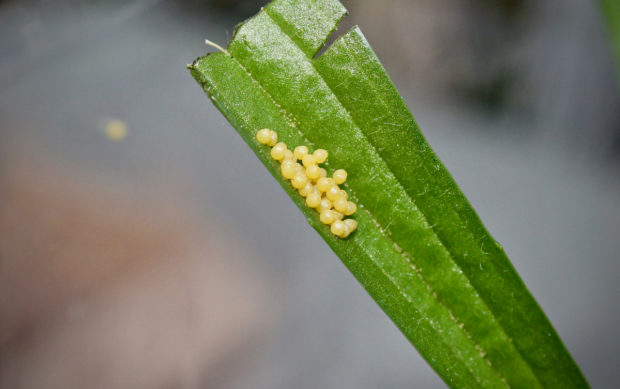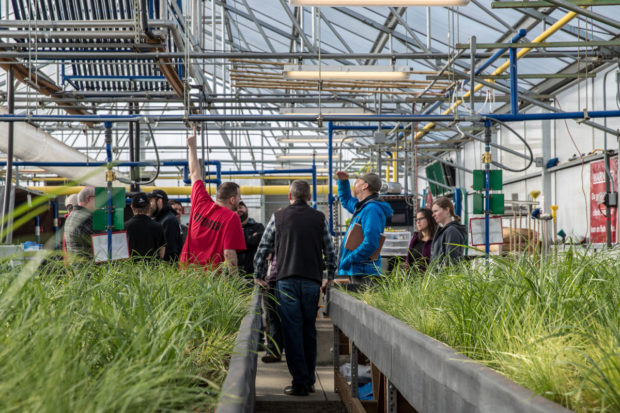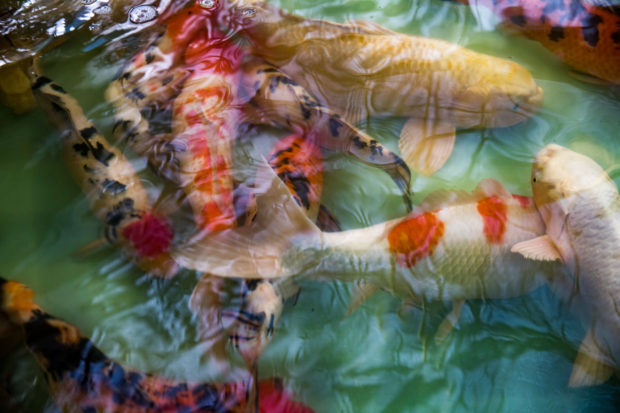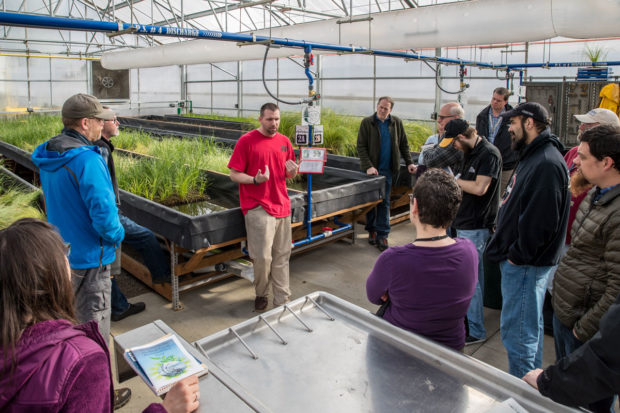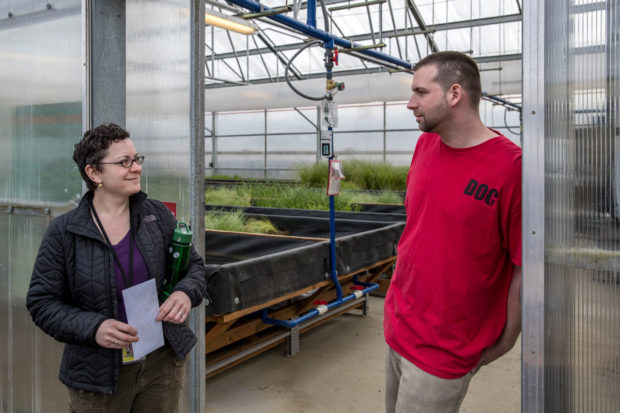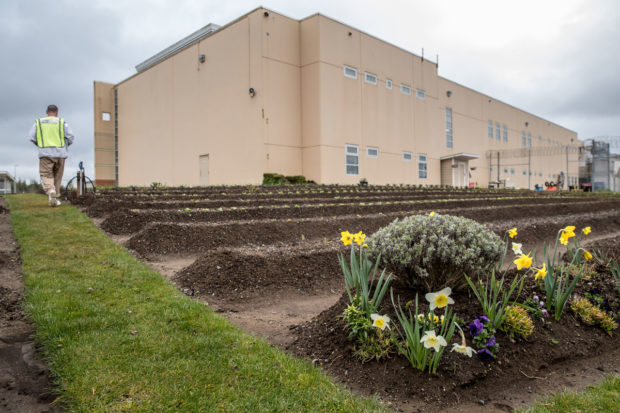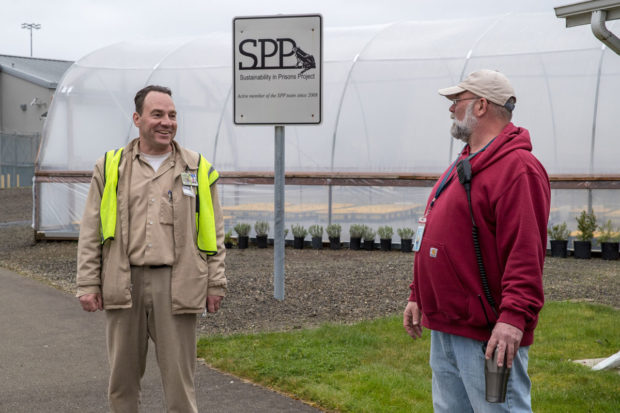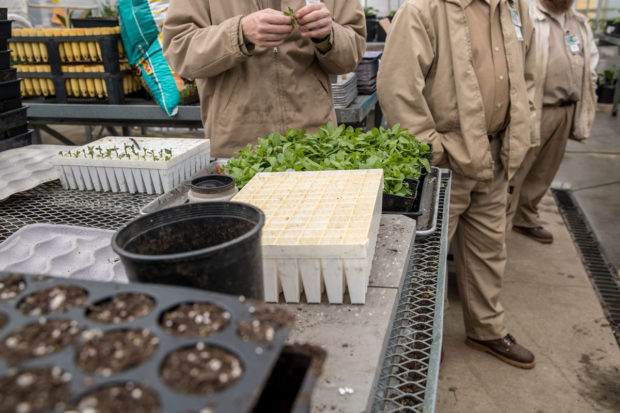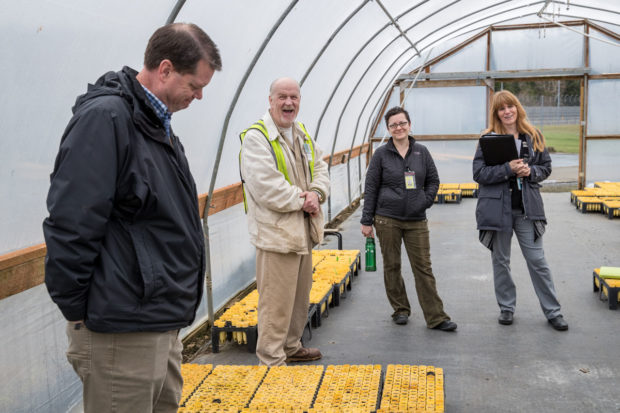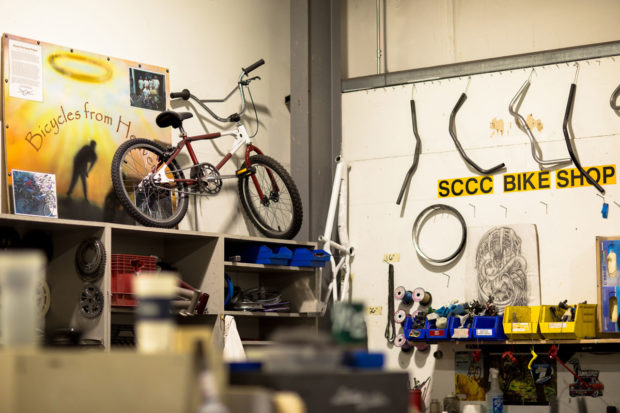Text by Susan Christopher, photos by Keegan Curry
Hello! My name is Susan Christopher and I’m currently incarcerated at Mission Creek Corrections Center for Women in Belfair, Washington. I would like to thank the Sustainability in Prisons Project (SPP) for blessing me with the incredible opportunity of being involved with the Taylor’s Checkerspot Butterfly Program for more than three years.

Susan helps technician Cynthia Fetterly examine a newly emerged butterfly.
The goal of the program is to successfully breed and rear the federally-endangered Taylor’s checkerspot butterfly in captivity and release 3000-5000 larvae into their native and restored habitats each year. This is a collaboration of many partners including The Evergreen State College, Washington Department of Fish and Wildlife, Oregon Zoo, U.S. Fish and Wildlife Service, and Department of Defense, among others.

During the four breeding seasons I worked in the program, I was able to witness every life stage up close and personal. I watched a butterfly lay her eggs on a leaf. A few weeks later, through a microscope, I watched those eggs hatch. While feeding those caterpillars every day, I saw many of them shed their outer skin—a process called molting—several times as they matured. I watched them reach the diapause stage, in which they slept for several months. Upon waking up in the spring, I would feed them again until the true miracle began: as they shed their last exoskeleton, I could see the chrysalis form until they became a pupa. Roughly three weeks later, I witnessed the final stage of the miracle of transformation when the butterfly emerges, unfurls its wings, and takes its first flight. It was simply amazing.

Susan offers her knowledge of Taylor’s checkerspot husbandry to producers from PBS Nature.

A biologist from WDFW helps Susan understand the composition of prairie vegetation in a healthy Taylor’s checkerspot habitat.
I’ve often wondered how many people in this world have had the opportunity to observe each of those events. Only a handful, I would guess. But that is just part of what I got from this program.
I was interviewed by PBS twice and appeared on a PBS NewsHour segment. I was allowed to attend a Working Group Conference and gave a presentation about our program to approximately 40 managers and biologists who also work with Taylor’s checkerspot. I have also been interviewed by an author from Japan and a group of prison administrators from Thailand. This last spring, myself and the other butterfly technicians got to go on a field trip to see our “finished product”—wild checkerspots—in their restored habitat.
This was more than just a job; this was a once-in-a-lifetime opportunity that has provided me with professional skills and many lifelong memories.
I would never have believed I would be given such a chance in prison, but thanks to the people at SPP, WDFW, and the Oregon Zoo—all who took a risk by bringing this program to incarcerated individuals—I can truly say this has changed my life. Thank you to all those who had the foresight to believe in us.

Susan Christopher and the 2017 butterfly crew—Jessica Stevens, Alexis Coleman, Nichole Alexander, and Cynthia Fetterly—pose for a photo after hosting Girl Scouts Beyond Bars in the greenhouse at MCCCW.



























